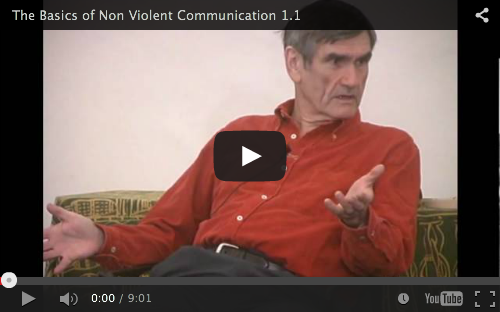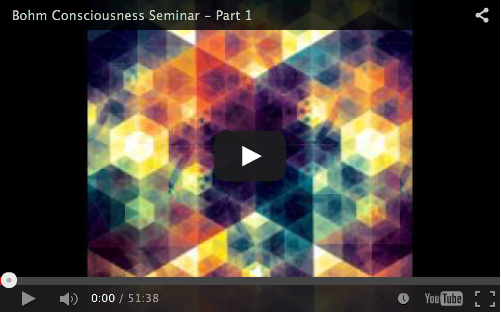|
Everyone is busy these days and no one seems to have the capacity to listen, to really listen. How often do we speak and feel cut off, or politely interrupted and find ourselves biting our tongue? And when we speak, do we really say what is not just on our mind, but in our heart and soul when we interact with people? That is often scary or risky. It means we will be vulnerable, and when time and money are omnipotent to the social structure, we tend to inhibit the slower, deeper parts of us and they often get shut down or ignored. Human beings are social animals meaning we develop permanent groups who live together and create relationships between individuals that endure from one encounter to the next. For humans, not having these social interactions can be detrimental to development since they are critical to our survival at the base and to an emotional stability and joy of living at the best. What this points to is that all of us need someone who can listen to us, to what our heart and soul is wanting to express. The word express come from expresser in Old French meaning in Latin, 'ex' - out and 'pressare' - to press. It can mean to obtain by squeezing or wringing. Expression does not have to be so forced however. We can learn to communicate mindfully, compassionately, and peacefully. We can also learn to be great listeners. The following methods are the basics. The language The first is Non-Violent Communication developed by Marshall Rosenberg. He grew up in Detroit during an era of racial tension in the 40's. The violence he witnessed in others and in himself lead him to study psychology and to seek a means of mediation that could resolve conflicts and differences peacefully. When the racial tensions resurfaced in the 60's, he developed the Center for Non-Violent Communication. The Center has continued its work in mediation and conflict resolution with intimate relationships, work settings, health care, social services, police, prison staff and inmates, governments, schools and social change organizations. Using the character of the jackal, who represents the ineffective communicator, and the giraffe, who understands non-violent communication methods, he gives us the tools on how to strengthen the ability to connect compassionately with oneself and others, as well as to resolve differences peacefully. "NVC reminds us what we already instinctively know about how good it feels to authentically connect to another human being." The emphasis is on deep listening, to ourselves as well as others, and to discover the depth of our own compassion. He reveals the not so secret fact that all human beings when communicating are only trying to request universal values and needs, either effectually or not so effectively. Universal means transpersonal, indicating that which is beyond the limits of personal identity. We all have these values and needs in other words, in varying degrees, so there is no reason to be defensive about having them. There is a wonderful workshop series posted on YouTube that can get you started with NVC. The mind Another important communication tool is Dialogue, developed by David Bohm and Jiddu Krishnamurti. I wrote about this in my post, 'A real sweet heart.' We are proposing a kind of collective inquiry not only into the content of what each of us say, think and feel but also into the underlying motivations, assumptions and beliefs that lead us to so do. Dialogue is a way of observing, collectively, how hidden values and intentions can control our behaviour, and how unnoticed cultural differences can clash without our realizing what is occurring. It can therefore be seen as an arena in which collective learning takes place and out of which a sense of increased harmony, fellowship and creativity can arise. With Bohm Dialogue the going gets more challenging. We need to make a greater investment. Dialogue requires a thorough understanding of and insight into 'Thought and the Thinking Process' in order for it to be properly implemented according to Bohm. His Consciousness Seminars help to introduce these concepts. Once the idea of 'Proprioception of Thought' or as Krishnamurti understands it 'Meditation,' is grasped, only then is true dialogue is possible. Next, one can read 'On Dialogue,' by Bohm or check out the condensed ideas on Wiki as an introduction to how to dialogue with others. In an intimate relationship, dialogue can allow for an unpredictable understanding and therefore a more honest communication. In my experience, a relationship that includes the use of dialogue is very enriching and rewarding. We can dialogue in the board room, with our kids, during a conflict or when any deep understanding is required. It can play out in a larger sphere as NVC does also. Bohm felt dialogue was the way to explore the roots of the many crises that face humanity today. "It enables inquiry into, and understanding of, the sorts of processes that fragment and interfere with real communication between individuals, nations and even different parts of the same organization." All this is good and well if you have managed to review the tools. However, you need other humans! You need to practice, and practice some more. This is where I leave you to use your imagination and ingenuity. As long as it is joyful and practiced as an experiential learning process, you are on the way to becoming a human who can communicate well. It is worth the effort! The heart We have the methods of a therapeutic practitioner and a scientist, now the words of a spiritual master. Listening with empathy means you listen in such a way that the other person feels you are really listening, really understanding, hearing with your whole being — with your heart. Deep listening, compassionate listening is not listening with the purpose of analyzing or even uncovering what has happened in the past. You listen first of all in order to give the other person relief, a chance to speak out, to feel that someone finally understands him or her. Deep listening is the kind of listening that helps us to keep compassion alive while the other speaks, which may be for half an hour or forty-five minutes. During this time you have in mind only one idea, one desire: to listen in order to give the other person the chance to speak out and suffer less. This is your only purpose. Other things like analyzing, understanding the past, can be a by-product of this work. But first of all listen with compassion. To listen with all their being, without prejudices, without judgment. ~ Thich Nhat Hahn When I was training as a homeopath with MICH, it was understood that deep listening was going to be the greatest challenge in our work. The ability we needed to develop was not to shut ourselves up by eradicating thoughts coming from mind and ego, but to know when 'we' jumped into the moment of listening. This is important. In meditation, one does not 'destroy' the mind or ego, one simply alters the focus on them. The picture is that a meditative state is like an empty blue sky and thoughts are like clouds that pass by, obscuring the view of the sky. All we can do is notice the clouds as quickly as possible and then they will disappear — for the moment, they will reappear and keep on reappearing. So the task is to know what a cloud looks like and when it is present, not to destroy the possibility of clouds ever forming! That would be a violent act and it would not be a heartfelt act of compassion to ourselves, so how could we then extend compassion to the person we are listening to? "I don't know how therapists train themselves to acquire this kind of capacity to listen. A therapist also may be full of suffering. While sitting and listening to the client, the seeds of suffering in him or her may be watered. If the therapist is overwhelmed by his own suffering, how can he listen properly to the other person? When you are trained to be a therapist, you have to learn the art of deep listening." Thich Nhat Hahn understands well what can get in the way of listening deeply to another. MICH taught us that to be aware of all our personal suffering, judgment, prejudices and the gymnastics of our ego was the first thing to develop in listening. Just to become aware, that is the challenge. Only then can we learn to put ourselves aside when we notice our thoughts and impressions coming up. This is a form of conscious meditation. Once we understand what our mind is doing, we can say, "Oh, there it is again, my ego thoughts about such and such." And once we are aware, we can dismiss them and continue to deeply listen. How do we find out what mind is doing and if our ego is present in our thoughts? This takes the practice to an even more compelling level. For one, there are no step by step videos or PDFs I can share with you on this. Just to know about it, you can then seek out and find resources that help to understand and experience it. Just keep in mind, thought and ego are slippery fish to contend with. Going back to dialogue can help us to see if what we are doing is leading to awareness and presence or away from it. Listening with the heart can help us decide if we are on the right tract to compassionate, peaceful communication, or not. It is important to open our hearts and inner knowing to what our mind is doing since we cannot logically manage our thoughts any more than we can stare at our own eyeballs. This is why spiritual leaders like Thich Nhat Hahn are helpful. They understand how to open the heart and how to develop compassion. With these methods and tools, you can be a baby giraffe well on your way to becoming a great listener. Take small steps, keep trying, and go easy on yourself. No one said listening well was easy, but everyone always says that a good relationship depends on two things, kindness and communication!
0 Comments
|
Lauren TrimbleHomeopath and Holistic Practitioner. Archives
October 2022
|




